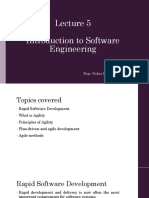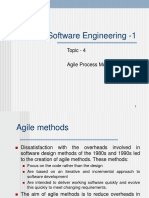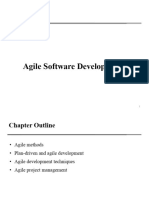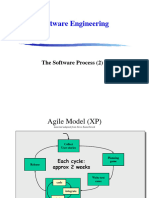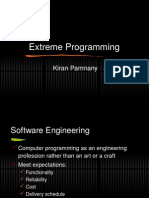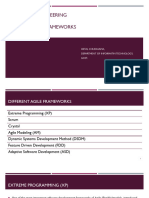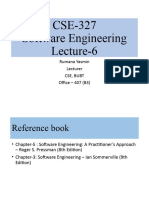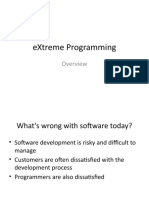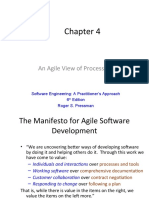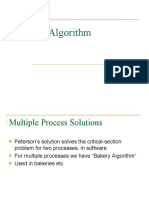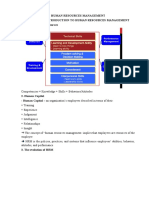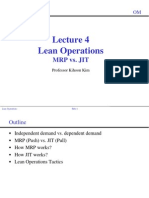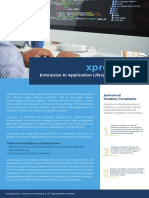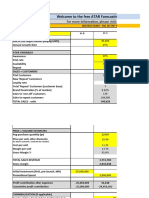0% found this document useful (0 votes)
104 views47 pagesSoftware Engineering (Week-2)
The document provides an overview of software engineering processes and models discussed in a lecture. It covers the waterfall model, V-model, rapid prototyping model, incremental model, spiral model, and agile development approaches like extreme programming (XP) and Scrum. Some key points include:
1) Software processes involve specification, development, validation, and evolution activities. Common process models include waterfall, V-model, rapid prototyping, incremental/iterative development, and spiral models.
2) The waterfall model is linear but inflexible to change. Agile approaches like XP and Scrum use iterative development in short sprints to adapt to changing requirements.
3) XP emphasizes test-driven development
Uploaded by
muhammad iftikharCopyright
© © All Rights Reserved
We take content rights seriously. If you suspect this is your content, claim it here.
Available Formats
Download as PDF, TXT or read online on Scribd
0% found this document useful (0 votes)
104 views47 pagesSoftware Engineering (Week-2)
The document provides an overview of software engineering processes and models discussed in a lecture. It covers the waterfall model, V-model, rapid prototyping model, incremental model, spiral model, and agile development approaches like extreme programming (XP) and Scrum. Some key points include:
1) Software processes involve specification, development, validation, and evolution activities. Common process models include waterfall, V-model, rapid prototyping, incremental/iterative development, and spiral models.
2) The waterfall model is linear but inflexible to change. Agile approaches like XP and Scrum use iterative development in short sprints to adapt to changing requirements.
3) XP emphasizes test-driven development
Uploaded by
muhammad iftikharCopyright
© © All Rights Reserved
We take content rights seriously. If you suspect this is your content, claim it here.
Available Formats
Download as PDF, TXT or read online on Scribd
/ 47

